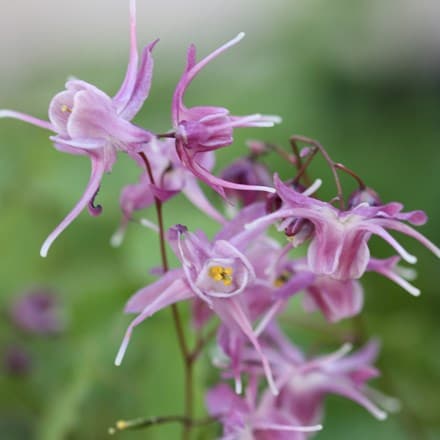Helleborus × hybridus 'Double Ellen Pink'
Lenten rose hellebore
- 9cm pot
- £12.99
- available to order from autumn
- 3 × 9cm pots
- £29.99 £10.00 each
- available to order from autumn
Delivery options
- Standard £5.99
- Position: partial shade
- Soil: heavy, neutral to alkaline soil
- Rate of growth: average
- Flowering period: February to April
- Hardiness: fully hardy
Helleborus × hybridus 'Double Ellen Pink' brightens late winter and early spring gardens with its large, freckled, double pink flowers that nod gracefully above glossy, dark green, semi-evergreen foliage.
Tough yet elegant, this clump-forming perennial thrives in shaded borders or containers, where it pairs beautifully with early spring bulbs. The frilly blooms add a delicate charm to garden displays and attract early pollinators, while the leathery foliage provides year-round interest.
Perfect for bringing colour and texture to darker corners, this hellebore is also deer and rabbit resistant.
Tough yet elegant, this clump-forming perennial thrives in shaded borders or containers, where it pairs beautifully with early spring bulbs. The frilly blooms add a delicate charm to garden displays and attract early pollinators, while the leathery foliage provides year-round interest.
Perfect for bringing colour and texture to darker corners, this hellebore is also deer and rabbit resistant.
Add lots of well-rotted leaf mould or organic matter to the planting hole. Cut the old leaves back down to the ground in January or February as this will show off the new emerging flowers to best effect. It will also help to reduce/minimise the spread of any foliar diseases (such as hellebore leaf spot) if present.
Apply a generous 5-7cm (2-3in) mulch of well-rotted organic matter around the base of the plant in autumn and provide a top-dressing of general fertiliser each spring. Cut off the seed heads to prevent inferior seedlings colonising.
Apply a generous 5-7cm (2-3in) mulch of well-rotted organic matter around the base of the plant in autumn and provide a top-dressing of general fertiliser each spring. Cut off the seed heads to prevent inferior seedlings colonising.
- Humans/Pets: Harmful if eaten; skin irritant

